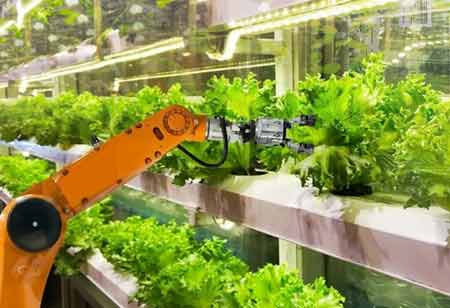Thank you for Subscribing to Agri Business Review Weekly Brief
How Data Analytics is Gaining Traction in the Farming Sector
Agriculture is one of the largest industries on the planet. Farming processes are becoming increasingly data-driven as smart technologies

By
Agri Business Review | Tuesday, June 01, 2021
Stay ahead of the industry with exclusive feature stories on the top companies, expert insights and the latest news delivered straight to your inbox. Subscribe today.
With everything being data-driven in today’s world, the agriculture sector is not far behind and is one of the biggest consumers of analytics and technology.
Fremont, CA: Agriculture is one of the largest industries on the planet. Farming processes are becoming increasingly data-driven as smart technologies and sensors appear on fields and data grows in volume. The sector is being propelled forward by rapid advancements in data analytics, the Internet of Things (IoT), and cloud computing.
We can now monitor farms, soil, plant activity, and water levels to better understand agricultural systems than we ever could previously thanks to the development of data analytics technology. We can gather and analyze this data using wireless sensors to uncover trends that will allow farmers to make more informed decisions, resulting in increased output and, ultimately, a better product.
Smart farming, often known as the Third Green Revolution, is the deployment of smart technologies to innovate the agriculture sector. It has the potential to bridge the gap between cutting-edge technology and the agricultural sector, which has traditionally relied on more traditional farming methods.
Farmers are using data to figure out harvest yields, fertilizer need, cost savings, and even future crop optimization methods. Data analytics solutions are used in smart farming to gather data from numerous farming practices and generate algorithms that can be used by different farms to produce a crop yield that is both fruitful and sustainable. Farmers will be able to better estimate agricultural activity and use strategies that are not just better for their crops but also more environmentally friendly with this knowledge.
External variables that we have no control over are a key risk element in farming and agriculture. Pests and crop diseases, for example, as well as natural calamities such as storms and extreme weather, can wipe out entire harvests. It was nearly impossible to forecast such disasters until data analytics techniques became available.
Any amount of external ideas or information can be factored into machine learning and algorithmic techniques. Farmers can then plan or act accordingly using predictive modelling techniques. Take, for example, weather patterns, consumer demand, and industry trends. Workers in the agriculture industry will be able to use this information to better understand how the environment affects their work.





